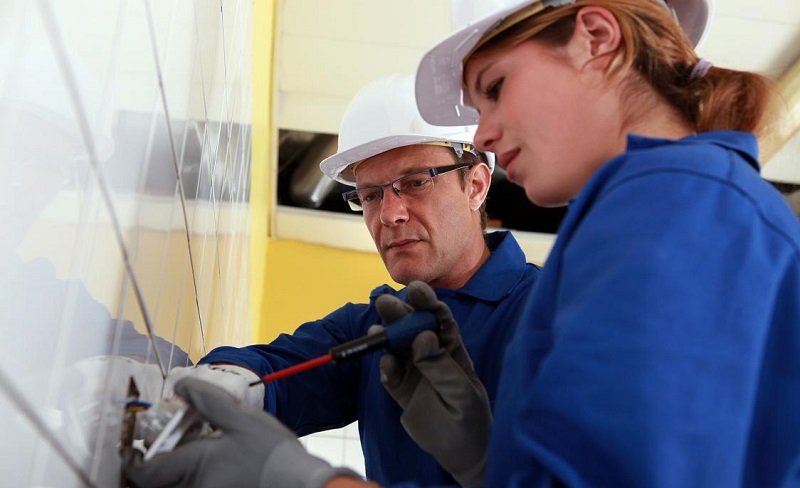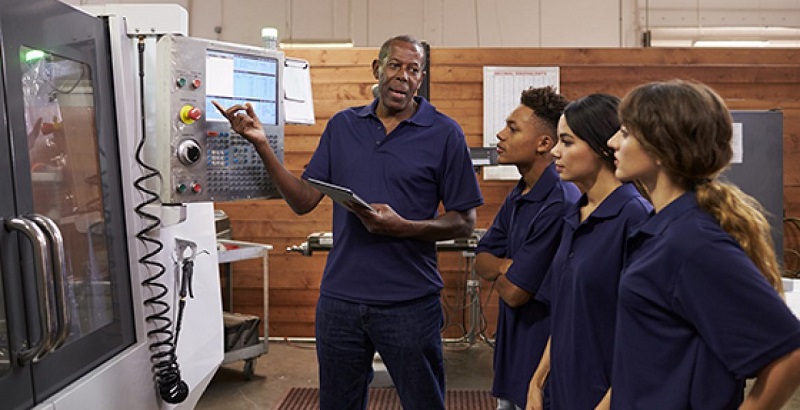At age 16, Hannes made one of the most momentous decisions of his life: leaving school to enroll in an apprenticeship program. The theory was not for him. I wanted to do something more practical: learn by doing. In the dairy factory in his small town Gmunden, in Austria. He found an opportunity for dual training and began to train as a dairy technician.
Today, 33 years later, Hannes is the head of the factory’s laboratory, manages a team of eight people and trains new apprentices. Like Hannes, the company also grew: it tripled its number of workers (from 100 to 340 between 1985 and 2018), quadrupled the liters of milk processed per day (from 250,000 to one million) and now exports its products to 35 countries in three continents.
Keys to a good apprenticeship program
According to the publication Apprentices for the 21st Century: A model for Latin America and the Caribbean? Austria has one of the apprentice systems more consolidated and successful in the world (which is reflected in the fact that it has one of the lowest rates of general and youth unemployment in the OECD countries). Like Hannes, many young Austrians see dual education as an alternative to university education (around 80% of 15-year-old students decide to opt for technical and vocational education and about 40% of these young people are apprentices). In fact, both her daughter and her niece decided to follow this path: Lara, 16, is an apprentice to be a beauty cult; and Celina, 17, is an apprentice to be a dairy technician. After talking to them, I was able to identify some of the elements that make the Austrian system a good apprentice program.
Austria has one of the most established and successful apprenticeship systems in the world, which is reflected in the fact that it has one of the lowest rates of general and youth unemployment in the OECD countries.
The Austrian apprenticeship program
In the first place, the apprenticeship system in Austria combines practical teaching in the workplace with theoretical classroom teaching schemes that vary from job to job. For example, Celina works regular days in the dairy laboratory and once a year goes to a boarding school for 10 consecutive weeks in which all the theoretical teaching is concentrated. Instead, Lara has to go to school 10 hours a week and work in the beauty salon 4 days a week. The content of apprenticeship programs is continuously adapting to changing economic and technological developments.
Secondly, apprentices are paid for their work and the remuneration grows according to your experience, performance and abilities. While in her first year as an apprentice Celina earned 600 euros per month, now in her second year she is paid 800 euros per month (she already has more experience). When he graduates from the program, he expects to earn 1,100 euros (but this will depend on his performance). Like the theoretical teaching schemes, the payments also vary according to the job: as an apprentice to be a beauty culture, Lara earns 470 euros per month in her first year. What the different professions have in common is that all apprentices are provided with social security. From the start in the apprenticeship program, both Celina and Lara were enrolled in social security, which gives them health coverage, pensions and unemployment insurance.
From the start in the program, both Celina and Lara were enrolled in social security, which gives them health coverage, pensions and unemployment insurance.
Finally, there is a co-responsibility scheme between public and private actors for the design, implementation and financing of apprenticeship programs. The employer assumes the costs of on-the-job training, which includes the apprentice’s salary, materials, mentors, equipment and facilities for training. On the other hand, the costs of training outside the workplace are covered by the government, as well as the administration, promotion and evaluation of the program.
Apprenticeship program in Latin America and the Caribbean
Today there are many countries in Latin America and the Caribbean that are interested in developing apprenticeship system, among them Mexico, Bahamas or Jamaica. Not only do they help reduce the levels of youth unemployment, but they also facilitate the transition of young people from school to work and reduce the gap between the demand of the productive sector and the offer of training and professional training. Trainee systems with a long tradition, such as that of Austria and other countries such as Germany, Australia, Canada and the United Kingdom, can serve as international references to design the programs of our region.






